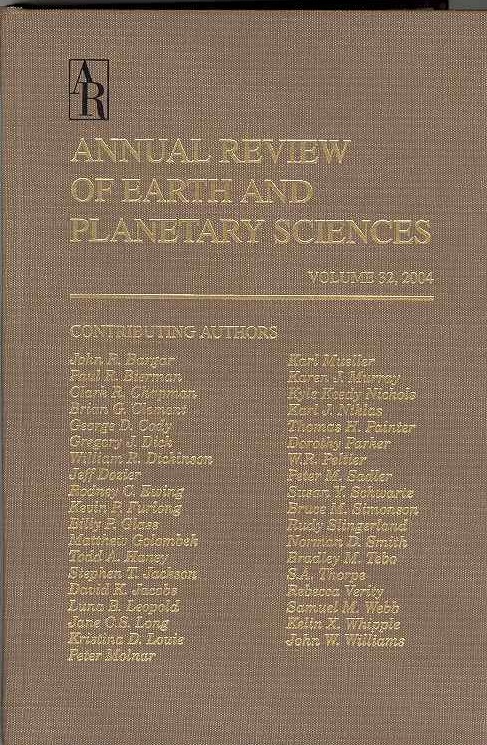Puzzles in Planetary Dynamos: Implications for Planetary Interiors
IF 13
1区 地球科学
Q1 ASTRONOMY & ASTROPHYSICS
Annual Review of Earth and Planetary Sciences
Pub Date : 2025-02-15
DOI:10.1146/annurev-earth-111523-081635
引用次数: 0
Abstract
Intrinsic magnetic fields were once commonplace across our Solar System, and many planetary bodies have sustained active dynamos to the present day. The nature and behavior of these dynamos vary widely, however, reflecting the diverse internal conditions of planets as summarized in this review. For the terrestrial planets, the existence of active dynamos and/or ancient remanent magnetization recorded in crustal rocks, or lack thereof, lead to questions about their timing and power sources. Paleomagnetic studies reveal that many small bodies in the Solar System exhibit remanent magnetization, often attributed to ancient core dynamos with little known about the fluid dynamics. For the gas giants, their dipole-dominated magnetic fields and internal structures are relatively well-characterized, with dilute cores that are not centrally concentrated and other stable layers that likely affect the dynamo in ways that are not yet understood. For the ice giants, their multipolar magnetic fields and internal structures are unusual yet poorly constrained, to the extent that even the water-to-rock ratio is not well-known. Through adoption of a broader comparative planetology approach, the study of dynamos in exoplanets and cool stars enriches our understanding of dynamo theories.行星发电机中的谜题:对行星内部的启示
固有磁场曾经在我们的太阳系中很常见,许多行星体一直保持着活跃的发电机。然而,这些发电机的性质和行为差异很大,反映了本综述中概述的行星内部条件的多样性。对于类地行星来说,在地壳岩石中记录的活跃发电机和/或古代残余磁化的存在或缺乏,导致了关于它们的时间和能量来源的问题。古地磁研究表明,太阳系中许多小天体表现出残余磁化,这通常归因于对流体动力学知之甚少的古代核心发电机。对于气态巨行星来说,它们以偶极子为主导的磁场和内部结构的特征相对较好,它们的稀核不是集中的,其他稳定的层可能以尚不清楚的方式影响发电机。对于这些冰巨行星来说,它们的多极磁场和内部结构是不寻常的,但却缺乏约束,甚至连水岩比都不为人所知。通过采用更广泛的比较行星学方法,对系外行星和冷恒星中的发电机的研究丰富了我们对发电机理论的理解。▪行星发电机表现出由其不同的物理和化学条件形成的不同磁场。▪对行星和恒星的研究将行星科学、地球物理学和天体物理学联系起来,揭示了共同的动力过程。▪虽然在理解行星和恒星磁场方面取得了重大进展,但许多谜题仍然存在。
本文章由计算机程序翻译,如有差异,请以英文原文为准。
求助全文
约1分钟内获得全文
求助全文
来源期刊

Annual Review of Earth and Planetary Sciences
地学天文-地球科学综合
CiteScore
25.10
自引率
0.00%
发文量
25
期刊介绍:
Since its establishment in 1973, the Annual Review of Earth and Planetary Sciences has been dedicated to providing comprehensive coverage of advancements in the field. This esteemed publication examines various aspects of earth and planetary sciences, encompassing climate, environment, geological hazards, planet formation, and the evolution of life. To ensure wider accessibility, the latest volume of the journal has transitioned from a gated model to open access through the Subscribe to Open program by Annual Reviews. Consequently, all articles published in this volume are now available under the Creative Commons Attribution (CC BY) license.
 求助内容:
求助内容: 应助结果提醒方式:
应助结果提醒方式:


